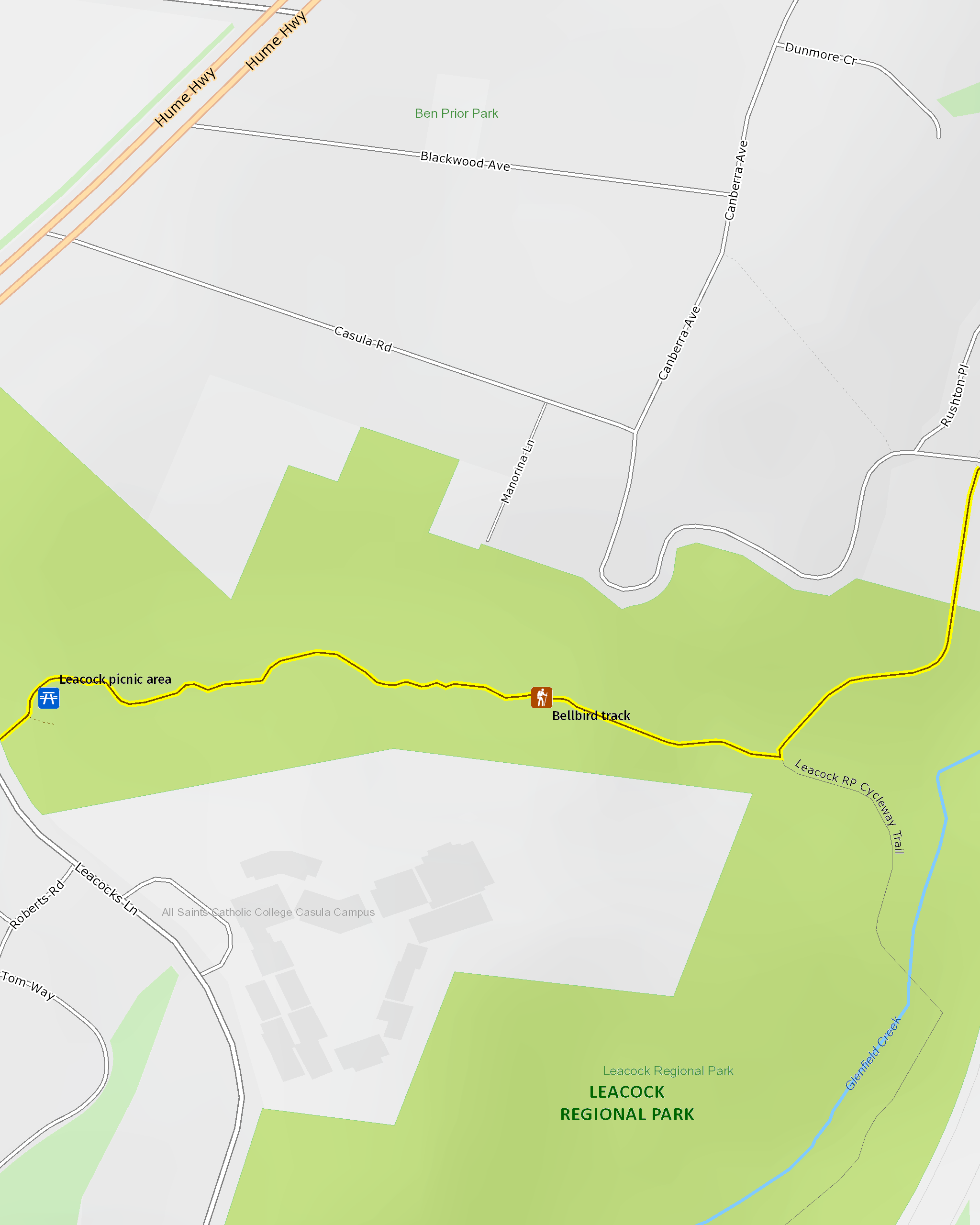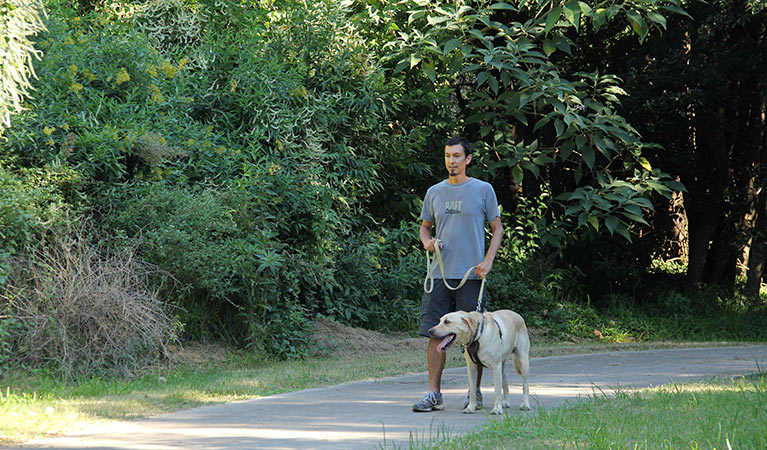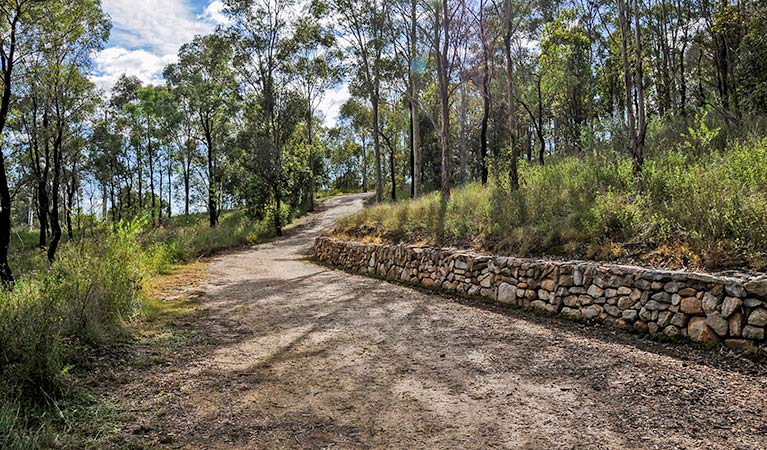Bellbird walking track
Leacock Regional Park
Overview
You’ll find the Bellbird walking track in Leacock Regional Park, southwestern Sydney. It’s a lovely stroll to and from Casula station, with birdwatching opportunities, too.
- Distance
- 0.8km one-way
- Time suggested
- 15 - 45min
- Grade
- Grade 4
- Trip Intention Form
-
It's a good idea to let someone know where you're going. Fill in a trip intention form to send important details about your trip to your emergency contact.
- What to
bring - Sunscreen, drinking water, hat
- Please note
- The track can be slippery after rain, so take care
- You may prefer to wear hiking boots and insect repellent when walking this track in wet weather
- Please take your rubbish with you when you leave the park
The 1.6km Bellbird walking track meanders through dense forest in southwestern Sydney’s Leacock Regional Park.
The track is true to its name – you’ll hear the call of bell miners echoing through the trees and whipbirds often join the chorus, creating a lovely rainforest feel. Feel the temperature drop as you stride beneath the canopy and keep your eyes open for wildlife.
This short track is popular with locals, who use it as a scenic shortcut to and from Casula station. Once you’ve finished walking, why not pop over to the Casula Powerhouse Arts Centre for a coffee at The Powerhouse Café?
Map

Map legend

Local alerts
For the latest updates on fires, closures and other alerts in this area, see https://uat.nswparks.cloud/things-to-do/walking-tracks/bellbird-walking-track/local-alerts
General enquiries
- National Parks Contact Centre
- 7am to 7pm daily
- 1300 072 757 (13000 PARKS) for the cost of a local call within Australia excluding mobiles
- parks.info@environment.nsw.gov.au
Park info
- in Leacock Regional Park in the Sydney and surrounds region
Leacock Regional Park is always open but may have to close at times due to poor weather or fire danger
Visitor info
All the practical information you need to know about Bellbird walking track.
Maps and downloads
Learn more
Bellbird walking track is in Leacock Regional Park. Here are just some of the reasons why this park is special:
Great for relaxing

Swap tall buildings and busy roads for this pretty patch of nature. Leacock Regional Park offers the opportunity to escape and clear your mind in a delightful natural setting, right on your doorstep. It’s ideal for cycling and jogging along the edges of Glenfield Creek and the Georges River. If you’re looking for a western Sydney park to walk your dog, then look no further than Leacock Regional Park. Dogs are welcome here, as long as they’re on-leash and the 1.6km Bellbird walking track will give you both a good workout – particularly if you make it a return trip.
- Bellbird walking track You’ll find the Bellbird walking track in Leacock Regional Park, southwestern Sydney. It’s a lovely stroll to and from Casula station, with birdwatching opportunities, too.
- Leacock picnic area The picnic area at Leacock Regional Park, just off the Hume Highway near Casula, is a great rest stop on a long drive or for a picnic with your dog in toe.
Significant flora

Leacock Regional Park is part of the Cumberland Plain woodland, an endangered ecological community that houses the critically endangered Cumberland Plain land snail. The park is also one of the few places in NSW where you can see the rare tree species, blue box eucalyptus, as well as some of the oldest native and endemic trees in metropolitan Sydney. The Weaving Garden Environment Group is currently carrying out bush regeneration within the park.
Plants and animals protected in this park
Animals
-

Common brushtail possum (Trichosurus vulpecula)
One of the most widespread of Australian tree-dwelling marsupials, the common brushtail possum is found across most of NSW in woodlands, rainforests and urban areas. With strong claws, a prehensile tail and opposable digits, these native Australian animals are well-adapted for life amongst the trees.
-
Cumberland Plain land snail (Meridolum corneovirens)
The endangered Cumberland Plain land snail is only found on the Cumberland Plain, west of Sydney. During drought it digs deep into the soil to escape harsh conditions. Its brown shell is thin and fragile.

